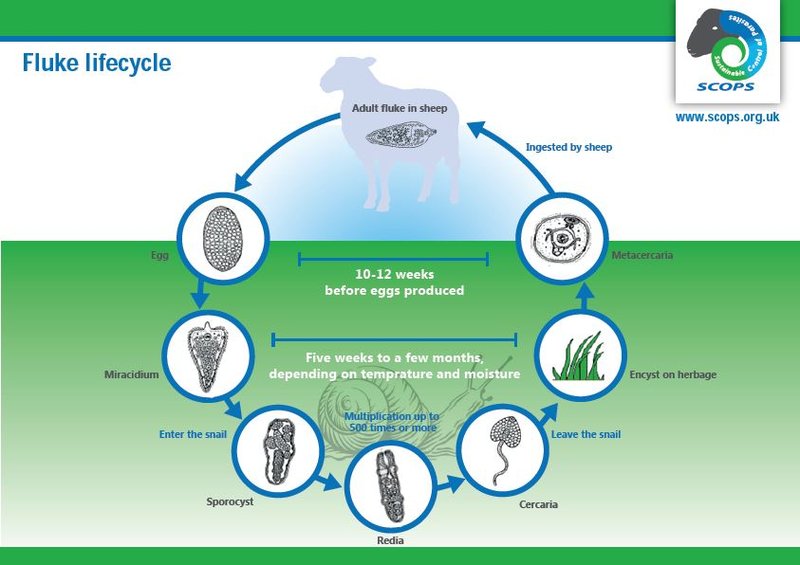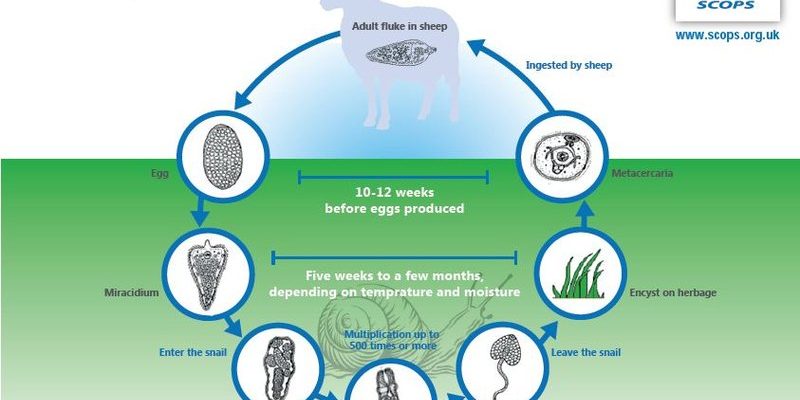
Now, you might be wondering how such a small creature manages to feed itself. Well, it’s not about the size; it’s about the method. It’s almost like watching a magician perform a trick—one minute everything seems normal, and the next, you’re left wondering how the magic happened. In this case, the liver fluke’s feeding mechanism is a unique blend of adaptation and survival tactics. Let’s dive into how this little guy does its thing.
What Is a Liver Fluke?
So, first things first: what exactly is a liver fluke? These are flatworm parasites that primarily target the liver of various animals, including sheep, cattle, and even humans under certain conditions. Think of them as squat, flat, and leaf-shaped creatures, typically measuring about 2 to 3 centimeters in length.
Liver flukes have complex life cycles that involve multiple hosts, usually starting with snails before moving on to larger animals. This is where they can really cause some problems. When liver flukes infect a host, they can lead to diseases like fascioliasis, which can cause significant health issues in livestock and even affect humans who consume contaminated water or undercooked food.
How Do Liver Flukes Attach to Their Host?
The first step in the feeding mechanism of liver flukes is attachment. They have a special structure called a sucker on their underside that helps them cling to the liver tissue. Picture the fluke like a little suction cup; it holds on tight, ensuring it doesn’t get dislodged while feeding.
Once attached, they can start to dig into the liver, where they feast on the host’s blood, bile, and liver cells. This is where it gets a bit gruesome: by feeding on the host’s tissue, liver flukes can cause inflammation and blockages in the bile ducts. This can lead to pain and even more serious health issues for the host.
The Feeding Process of Liver Flukes
Feeding for liver flukes isn’t as straightforward as just chomping down. They have a unique way of siphoning nutrients. Here’s how it works:
1. Suctioning: Using their suckers, they create a vacuum that helps pull in small bits of tissue and fluids.
2. Digestive Juices: Once they bring food into their system, liver flukes release digestive enzymes to break down the food into smaller, digestible pieces. It’s like they’re setting up a tiny restaurant inside the liver!
3. Nutrient Absorption: After breaking down the food, they absorb the nutrients through their skin. This is a fascinating adaptation since they don’t have a traditional digestive tract like many other organisms.
While they’re feeding, liver flukes can grow quite large and reproduce rapidly, which can overwhelm the host’s system.
Impact on the Host’s Health
Liver flukes may be small, but they can wreak havoc on their hosts. Here are some ways they affect health:
– Inflammation: The presence of flukes can cause significant inflammation in the liver. Imagine a sore spot that just won’t go away.
– Bile Duct Obstruction: They can block bile ducts, which can lead to bile backing up into the liver and causing serious complications.
– Nutritional Deficiencies: As they consume a large number of nutrients, they can lead to deficiencies in the host animal, which may result in weight loss and poor overall health.
In livestock, this can have economic impacts as well, leading to decreased productivity and increased veterinary costs.
Life Cycle: A Three-Stage Journey
Understanding the life cycle of liver flukes helps us see how their feeding mechanism fits into their survival strategy. This cycle consists of three main stages:
1. Egg Stage: Fluke eggs are laid in the bile ducts, which then pass out of the host in the feces.
2. Larval Stage: These eggs hatch in water and develop into larvae, which then infect snails.
3. Adult Stage: Once the larvae leave the snail, they find a new host, such as a sheep or cow, and mature into adults.
Each stage of their life cycle is crucial for their feeding and survival, making them quite resilient in varying environments.
How Do Liver Flukes Evade the Host’s Immune System?
You might be wondering, how do these little guys sneak by a host’s immune system? Well, liver flukes have some clever tricks:
– Molecular Mimicry: They can change their surface proteins to resemble host proteins. This makes it harder for the immune system to recognize them as intruders.
– Immunosuppression: They can also release substances that suppress the immune response, allowing them to thrive without drawing attention.
These adaptations play a significant role in their ability to survive and continue feeding in a hostile environment.
Prevention and Treatment of Liver Fluke Infections
Preventing liver fluke infections is much easier than treating them once they occur. Here are some steps to consider:
– Regular Deworming: For livestock, regular deworming can help control liver fluke populations before they become a serious issue.
– Pasture Management: Keeping animals away from contaminated water sources and managing snails in grazing areas can reduce the risk.
– Vaccination: In recent years, research has developed vaccines that might help prevent infections in livestock.
If a liver fluke infection does occur, treatment typically involves antiparasitic medications that kill the flukes and help manage symptoms.
The feeding mechanism of liver flukes showcases the incredible adaptability of life, even at such a small scale. From their clever attachment methods to their unique ways of siphoning nutrients, these parasites have developed a fascinating, albeit destructive, way of surviving.
While they may seem like tiny villains in the world of wildlife, understanding their behavior and impact is crucial for both animal health and public awareness. Keeping an eye on prevention strategies can help reduce the harm caused by these little flukes, allowing us to keep our livestock healthy and thriving. So next time you hear about liver flukes, you’ll know this tiny parasite has quite the story to tell!

